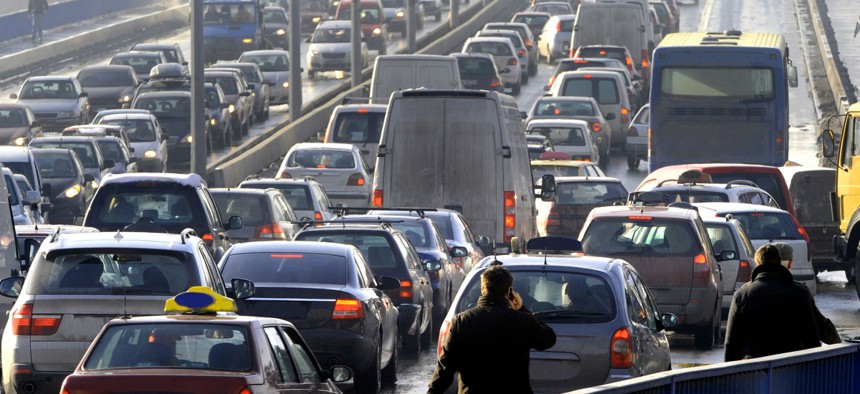This Dashcam App Can Map Traffic in Near-Real-Time

bibiphoto/Shutterstock.com
The traffic safety app Nexar’s new “Live Map” feature lets anyone peek in on near-real-time video footage of city streets.
On the long, possibly dead-end road to fully automated driving, the promise of “connected” vehicles is something like a way station. When cars can communicate with one another over Wi-Fi and GPS, drivers should be able to anticipate hard stops, lane blockages, slippery pavement, and other kinds of unexpected terrain. Ultimately, connected robo-cars would be able to turn the untidy churn of human-driven traffic into a frictionless ballet of computer-controlled mobility. But for now, flesh-motorists can still benefit from such “smart” features: Many will soon be available in Ford’s lineup, for example. If you can’t shell out for a new ride, however, you’re out of luck.
On the other hand, Nexar, an AI-powered driving safety app, provides similar features to the masses. For $9 a month, it deploys your smartphone like a dashcam, recording your commutes. Stored in the cloud, that video footage can come in handy if you’re filing an insurance claim after a crash. Using artificial intelligence, it also helps Nexar predict possible accidents: The company combines the videos with data from your phone’s accelerometer and gyroscope to detect and alert you to dicey driving conditions.
Now some of the live footage from Nexar users—who number in the hundreds of thousands, in 160 countries—is available for anyone who wants a gander. The web-based Live Map, which shows close-to-real-time street views snapped from their dashboards, launched in July for New York City, and is soon to roll out in hundreds of other cities. The interactive web map is updated every few minutes with freshly captured chunks of streetscape. Using AI, it also identifies key features on the roads, such as traffic signals, stop signs, traffic cones, and barricades. It’s like Waze mashed up with Google StreetView.
Like Google’s mapping platform, Live Map is an addictive tool for digital globetrotters keen on aimless wandering. It also has a number of near-term practical applications, says Nexar CEO Eran Shir. City governments could use Live Map to snoop on construction sites, in order to assure workers are complying with permits. Or it could help them create a digital inventory of their street signage, a service that other AI-powered mapping companies, such as Mapillary, have gotten into.
But Nexar’s longer-term vision is something grander: to build a virtual model of the physical streets that lets city officials monitor and guide real individual vehicles, in order to optimize routes and mitigate congestion, Eran explained. Live Map could be a stepping stone towards that. “This allows us, for the first time, to unlock real use cases of this ‘digital twin’ concept, since we can know what's going on with a high-enough level of freshness,” Eran said.
This "Minority Report"-esque vision for urban traffic management is gaining traction, as cities prepare for autonomous vehicles and even the connected cars that will predate them. As I recently reported, L.A. and Portland are pursuing different paths toward building “digital twins,” as is Singapore, and a few cities in India.
Generally speaking, privacy advocates aren’t pleased with the idea of a government-controlled platform that tracks and potentially controls privately owned cars, though. For its part, Nexar “vows” never to let its data be used for monitoring by law enforcement, which is one common concern. It says it prioritizes keeping personally identifiable information under wraps. For example, Live Map uses AI to blots out faces and license plates, and may soon attempt to blur other stand-out features on vehicles. The company also says that it does not share data with third parties without user consent. Of course, the data exchange is built into its product: Without opting in, drivers don’t get the benefit of “smart” road condition updates.
But to Eran, that’s a happy tradeoff, where a person shares data into an ecosystem of other users: “People get more value than they contribute, without sacrificing privacy in any way.”


